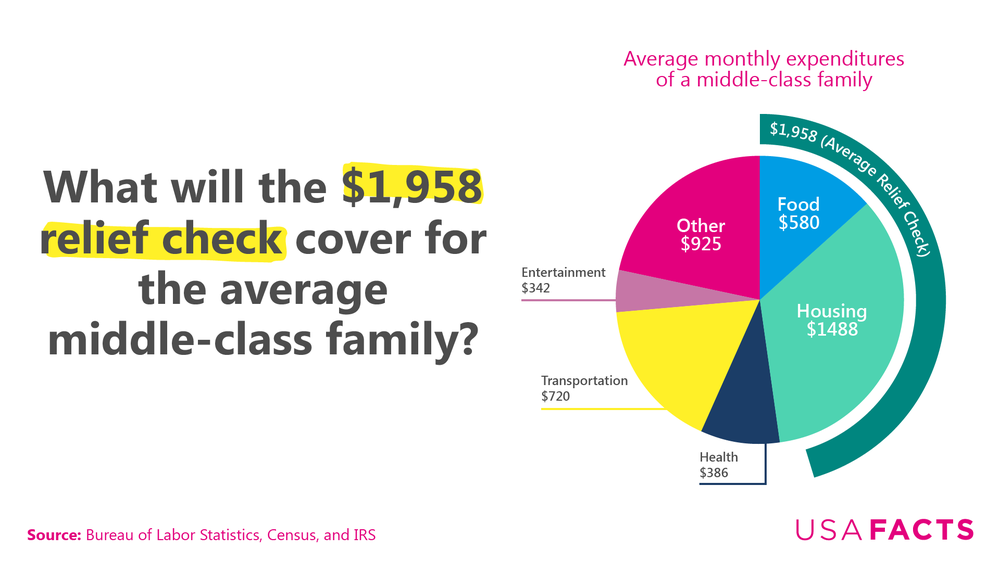Of the $2 trillion distributed in the Coronavirus Aid, Relief, and Economic Security (CARES Act), approximately $300 billion is dedicated to providing direct cash relief to Americans.
As USAFacts described in detail in a recent piece, a significant part of the legislation is a program to provide $1,200 tax rebates to qualifying individuals, with an additional $500 payments per qualifying child. The rebate begins to diminish at income levels above $75,000 (or $150,000 for joint filers). Families in the middle class, or the middle 20% of income earners ($33,000 to $66,000 in income), can expect to gain about $1,958 from the relief checks.

What exactly will the relief check cover for Americans? For reference, the monthly median household income in 2018 was $5,161, and the median gross rent as of 2018 is $1,023, according to the Census Bureau. According to the Bureau of Labor Statistics, the average middle class (middle 20% of income earners) household spent roughly $1,000 per week in 2018, with about $133 per week going towards food and $343 per week going towards housing. Households in the lowest 20% of income earners spent roughly $500 per week.
For full analysis of the CARES Act and related recent legislation, see our recent article.







